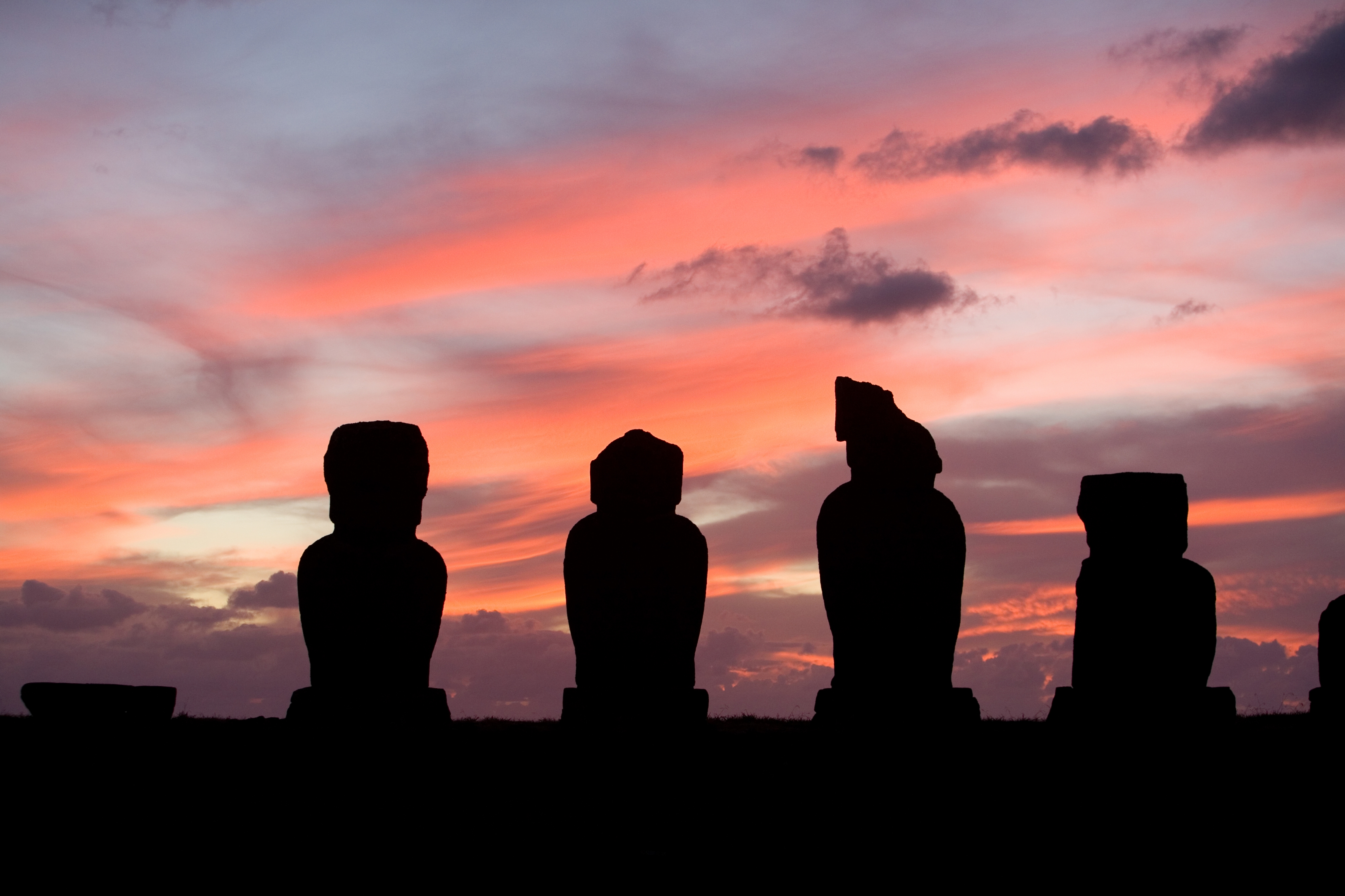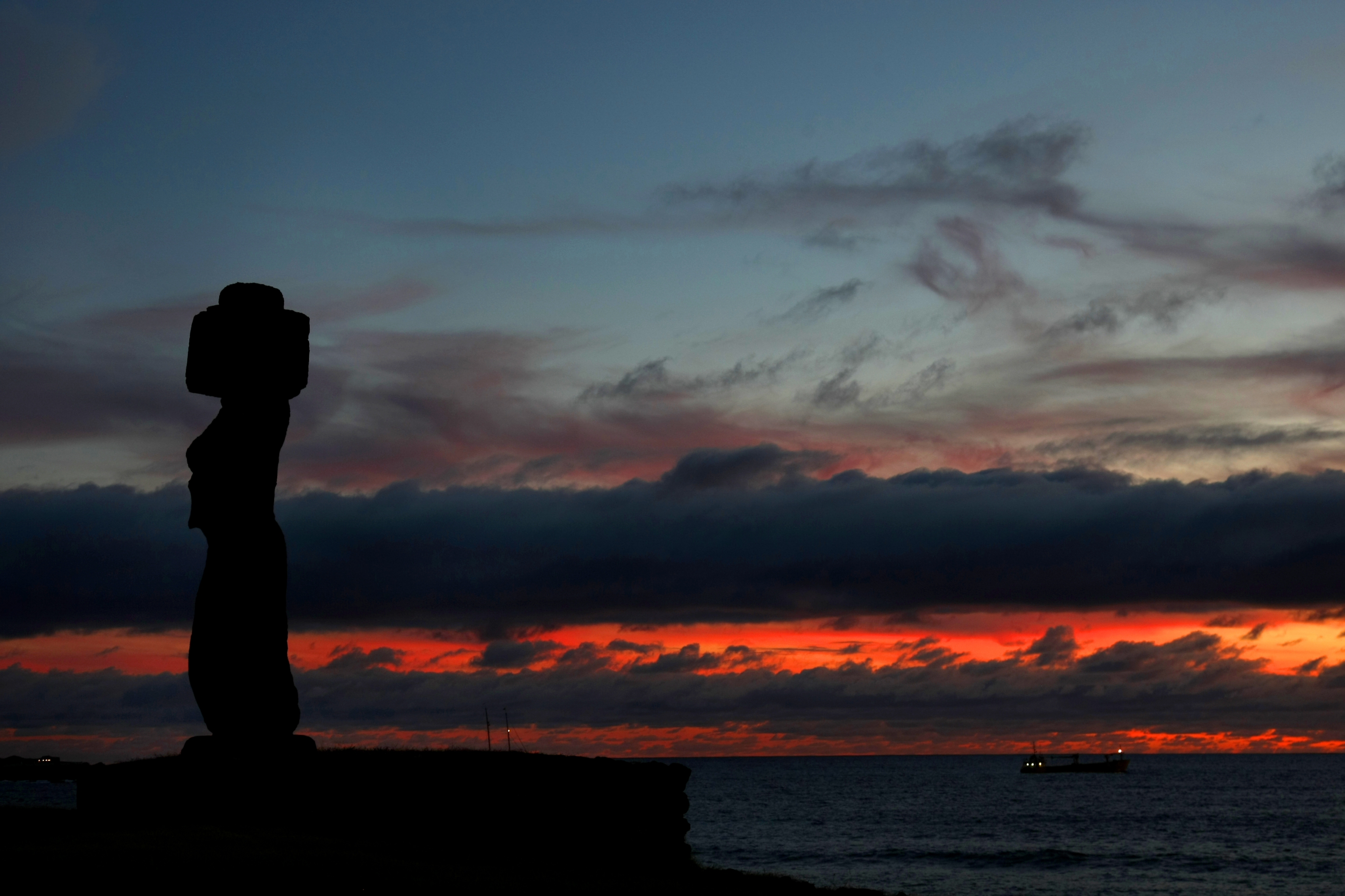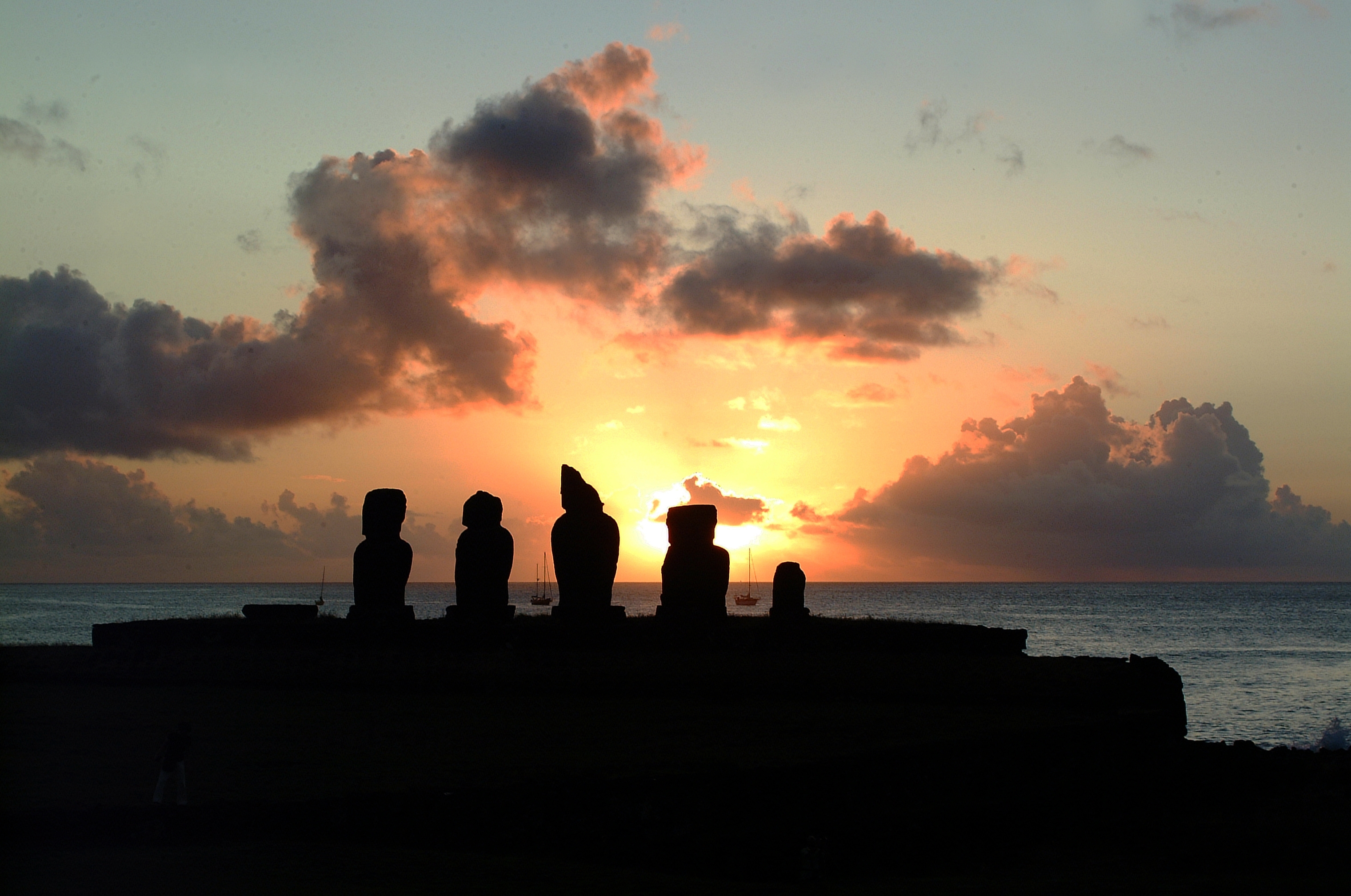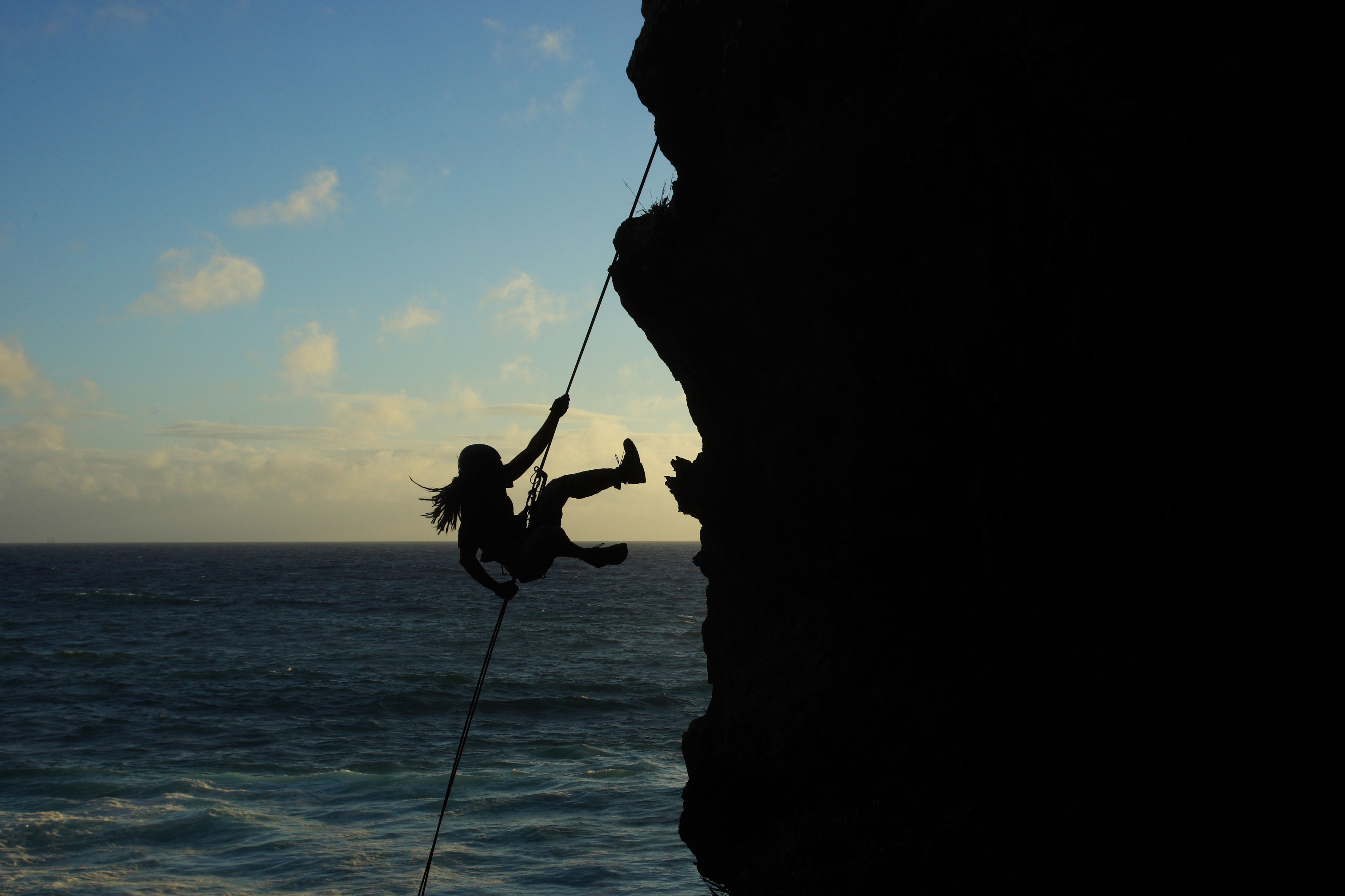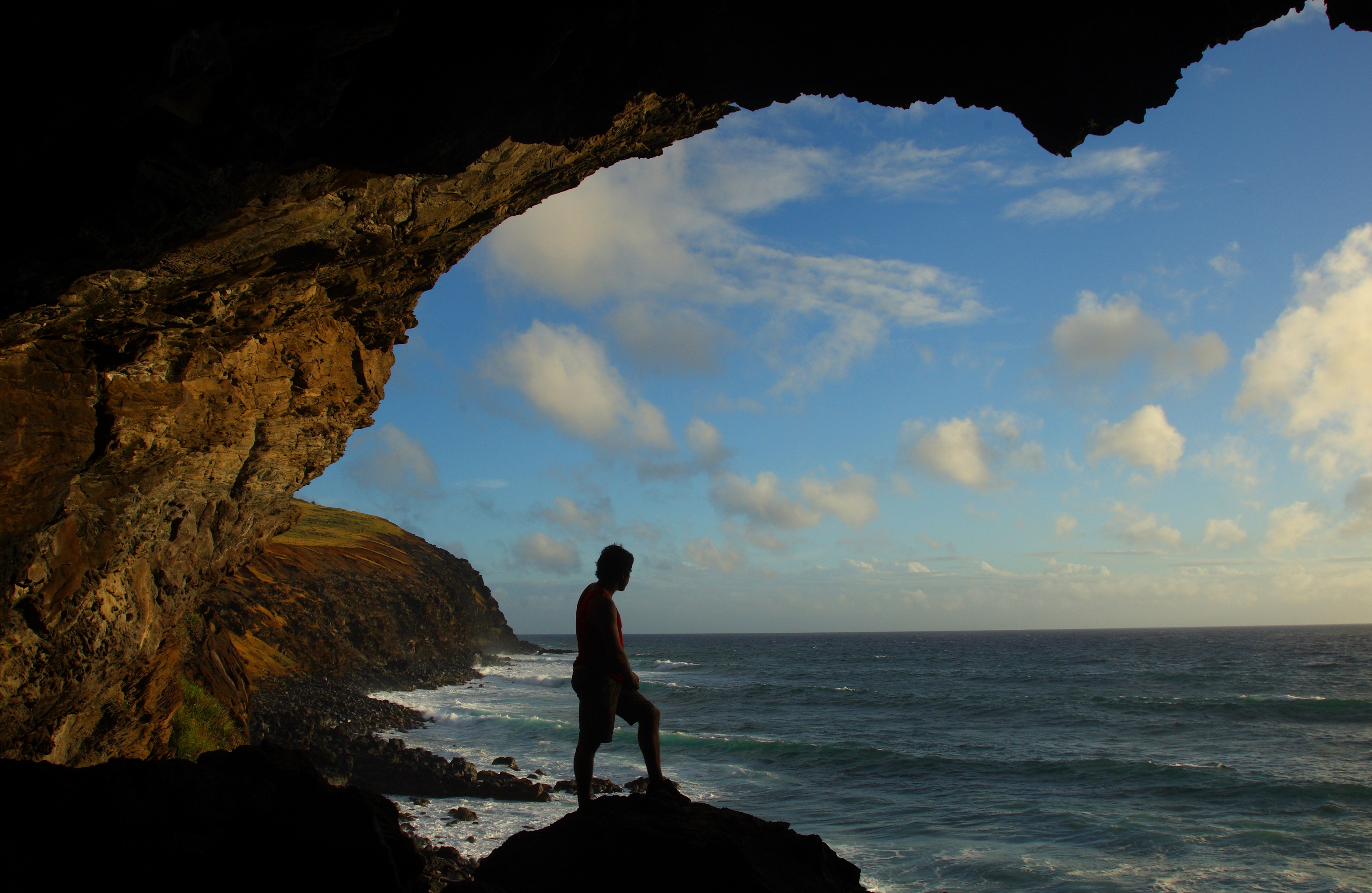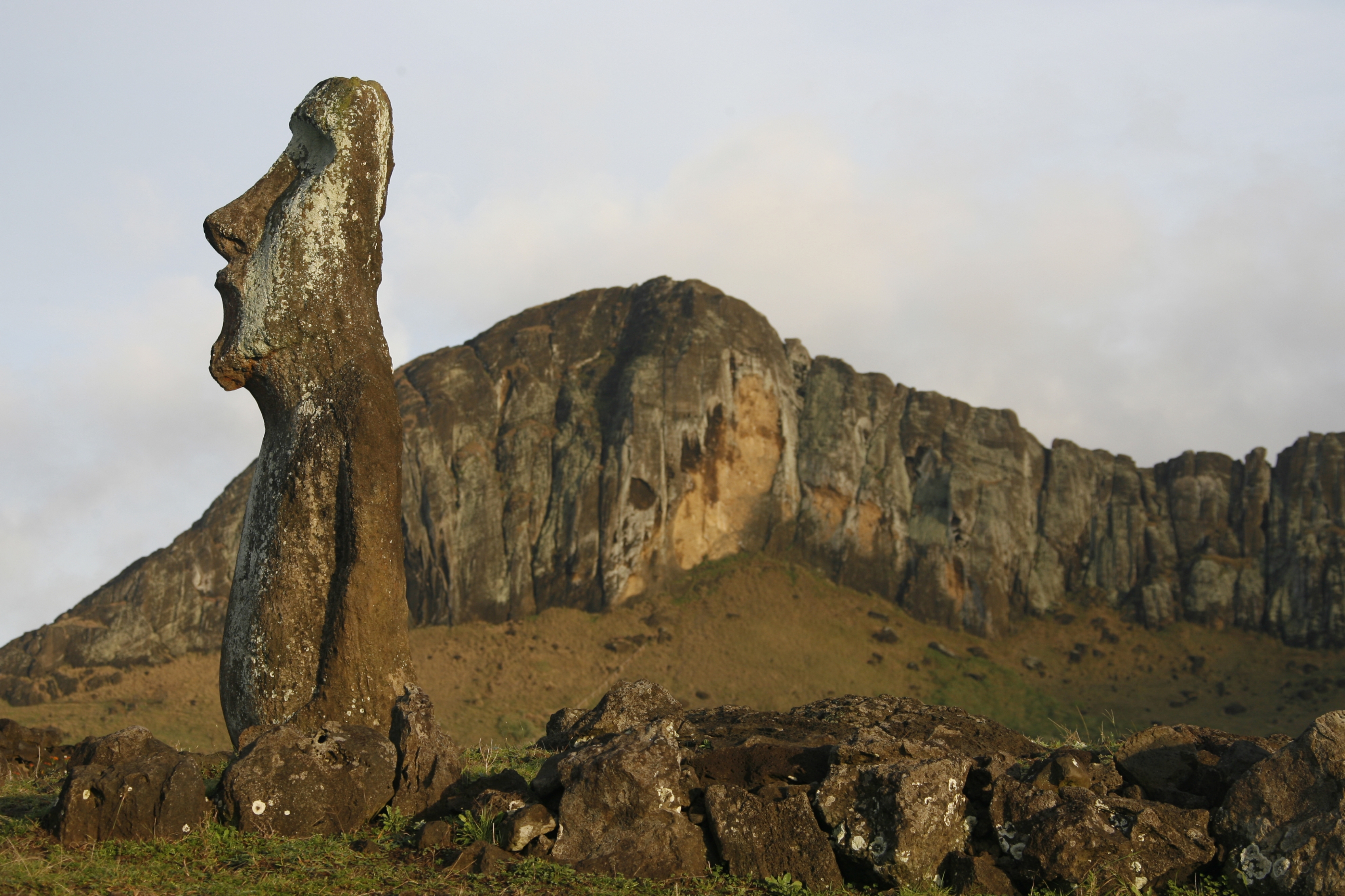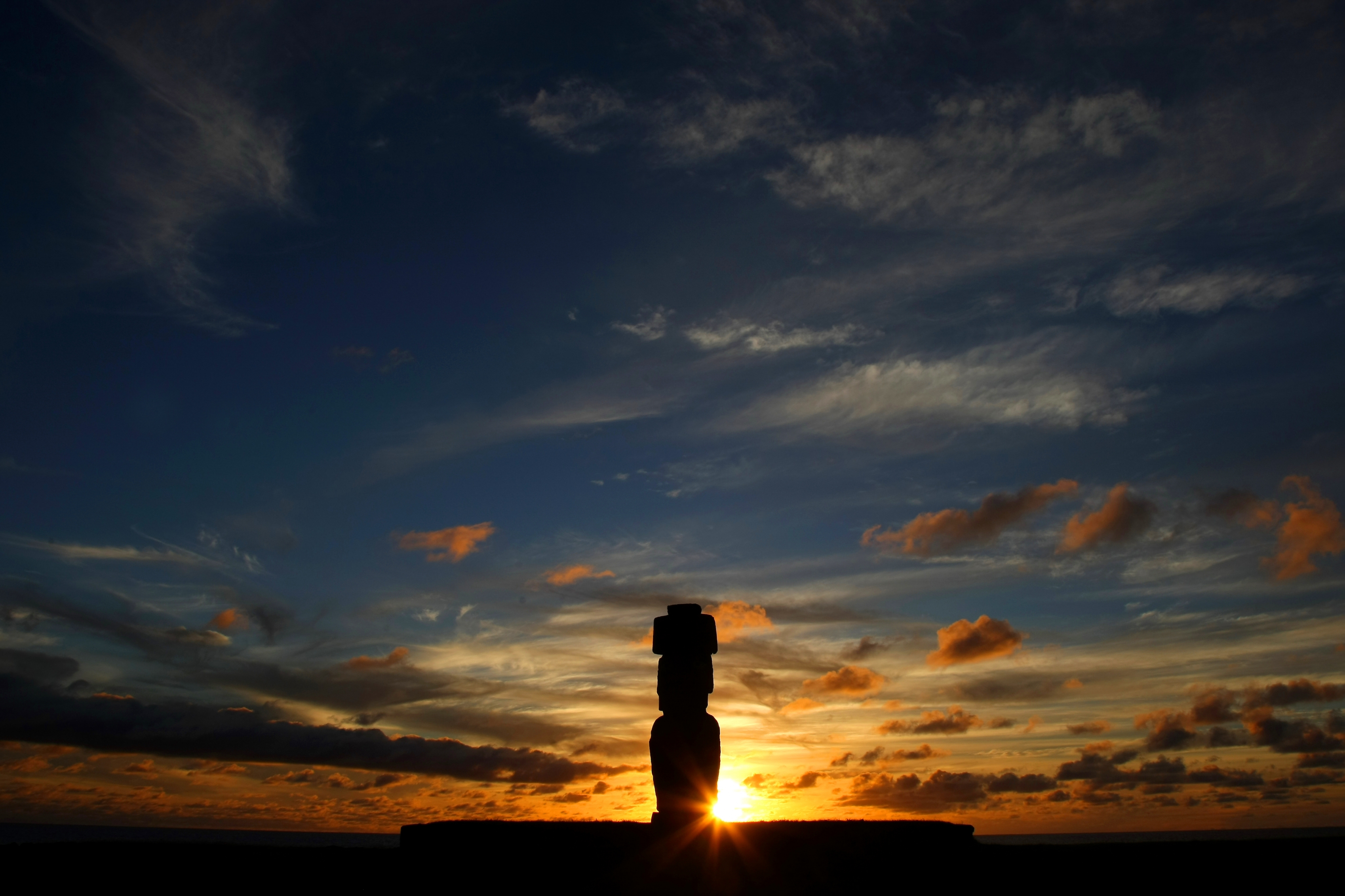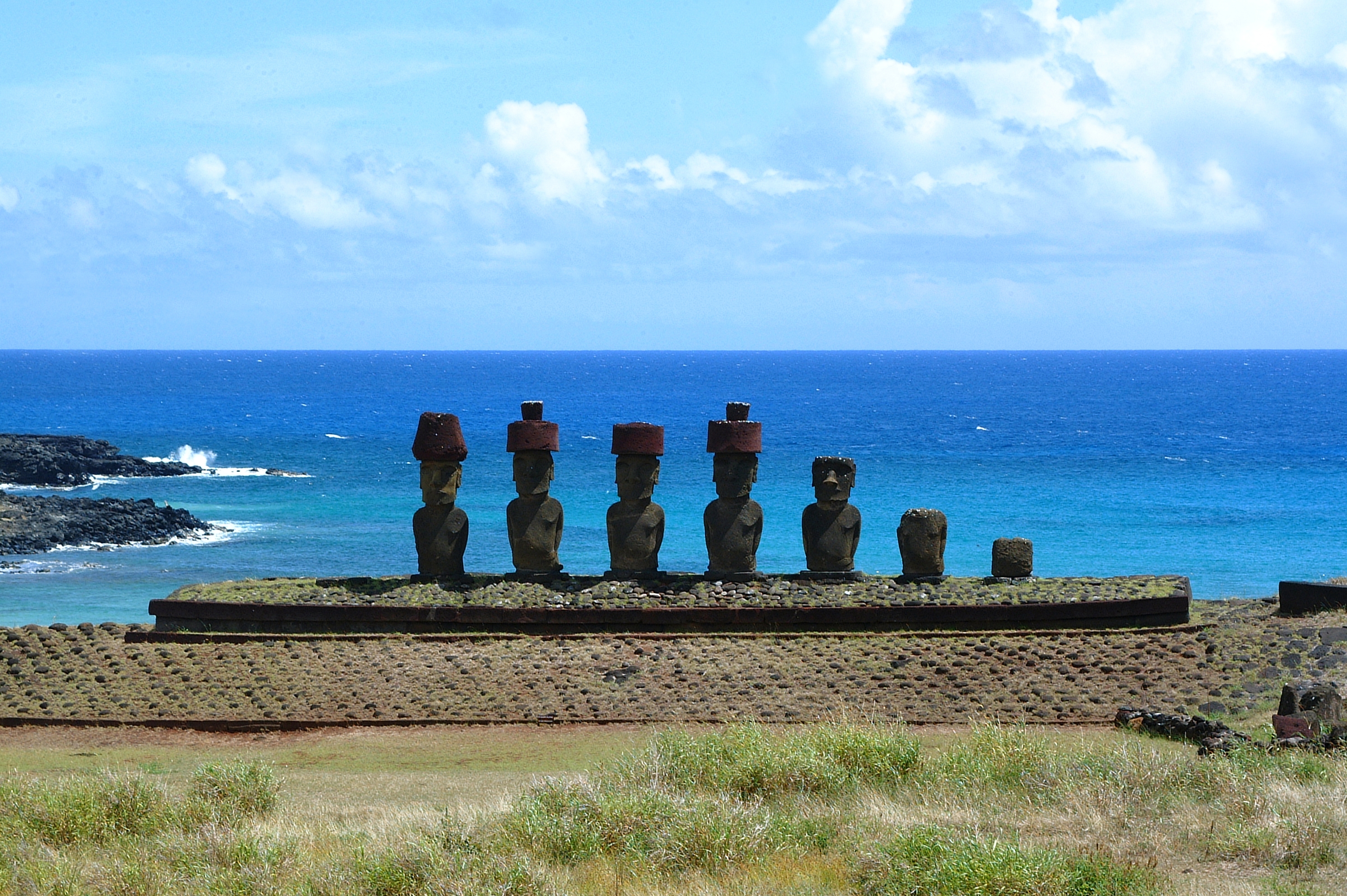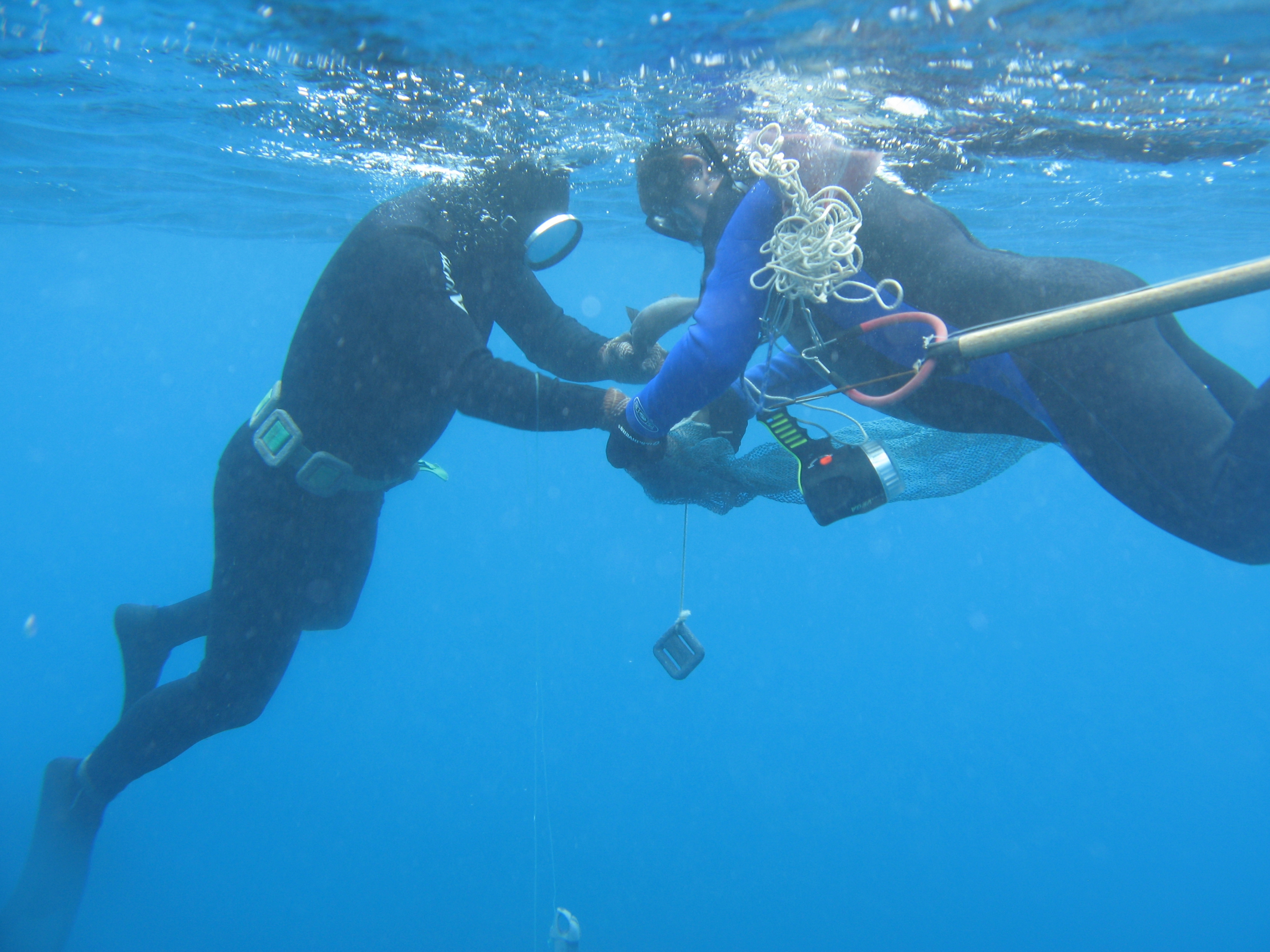HISTORY OF EASTER ISLAND
The first inhabitants of Easter Island settled between the years 400 and 800, period in which the enigmatic Moai were built and the major parts of the ceremonial ahu. Then in 800 until 1680 the cult tangata manu, or birdman was practiced. In 1680, the first contacts with Western sailors were made, and these were who discovered the island in April 1722, on the very day of Easter, a name which became internationally known.
The traditional name however is Rapa Nui, meaning "Big Rapa" in Tahitian, language of sailors who visited the territory during the nineteenth century.
According to the history of the Rapa Nui, the first settlers came to the island from Hiva, a mythological island, under the guidance of Hoto Matu'a, the first ariki or king. According to research, this legend is related to the migration of the people to Easter Island from the Marquesas Islands in Polynesia.
The Rapanui people society was divided into tribes that occupied coastal areas of the island and was also stratified into classes. Cultivations were performed in the interior of the island, while the coastline was used for religious, political and ceremonial centers of culture, especially in Anakena and Akahanga beach, where people worshipped their ancestors, who were represented by the Moais.
It is believed that between the fifteenth and seventeenth centuries, the Rapa Nui people suffered a crisis of overpopulation, which caused wars between the tribes, destruction of the altars and abandonment of the quarries where the Moais were made from volcanic stone.
At this time, the ceremonial of tangata manu-bird man began, where representatives of the clans engaged in a kind of sports competition, where the first man to return from the islet Motu Nui with a manutara egg (a pascuense tern) would become the chief of his tribe for one year.
Later, between 1859 and 1863, the slavers kidnapped over 1000 Rapanui people, representing a huge loss, since the loss of these islanders meant the disappearance of the Polynesia script Rongorongo which still remains a mystery.
In 1877, Chile decided to annex this territory to the country, achieving in 1988 a treaty ceding sovereignty to Chile and maintaining the titles of the heads of the clans. The lands of the islanders began to be returned at the end of the twentieth century.
